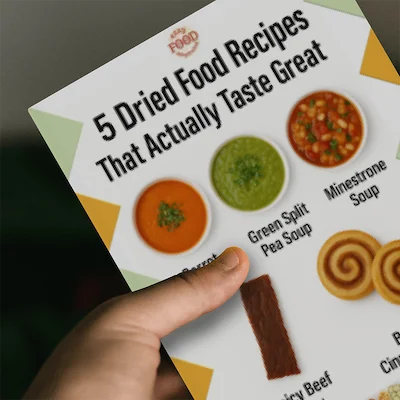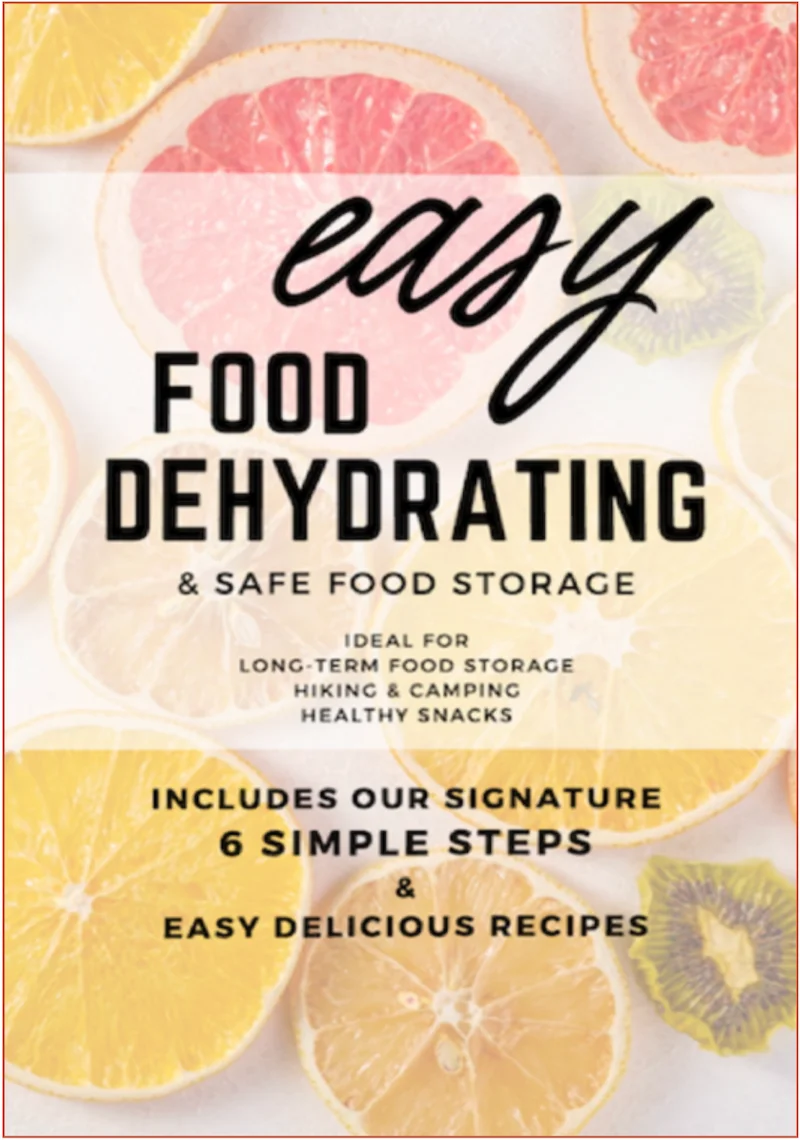What We Mean by “Dehydrate”
Here at Easy Food Dehydrating, “dehydrate” always means using an electric food dehydrator — the easy, reliable way to dry food at home.
- Home
- Dehydrating Fruits: Step-by-Step Guides by Type
- How to Dehydrate Citrus
How to Dehydrate Citrus:
Lemons, Limes, and Oranges

Are you ready to learn how to dehydrate citrus? If not, put them at the top of your dehydrating 'to-do' list! It's so easy to do.
✅ Quick Answer: How do you dehydrate citrus?
Slice lemons, limes, or oranges about ¼–⅜ inch thick, arrange on dehydrator trays, and dry at 125°F–135°F for 6–12 hours until brittle. Rotate trays halfway for even drying. Fully dried slices are crisp, light, and free from moisture.
Dehydrating citrus — whether lemons, limes, or oranges — is one of the easiest ways to preserve their fresh, zesty flavor. With just a dehydrator and a sharp knife, you can create slices that last for months and add brightness to teas, soups, baked goods, and cocktails.
Even better, dehydrated citrus is lightweight, stores beautifully, and gives you a handy pantry staple for flavor on demand. Let’s dive into how simple it is to get started.
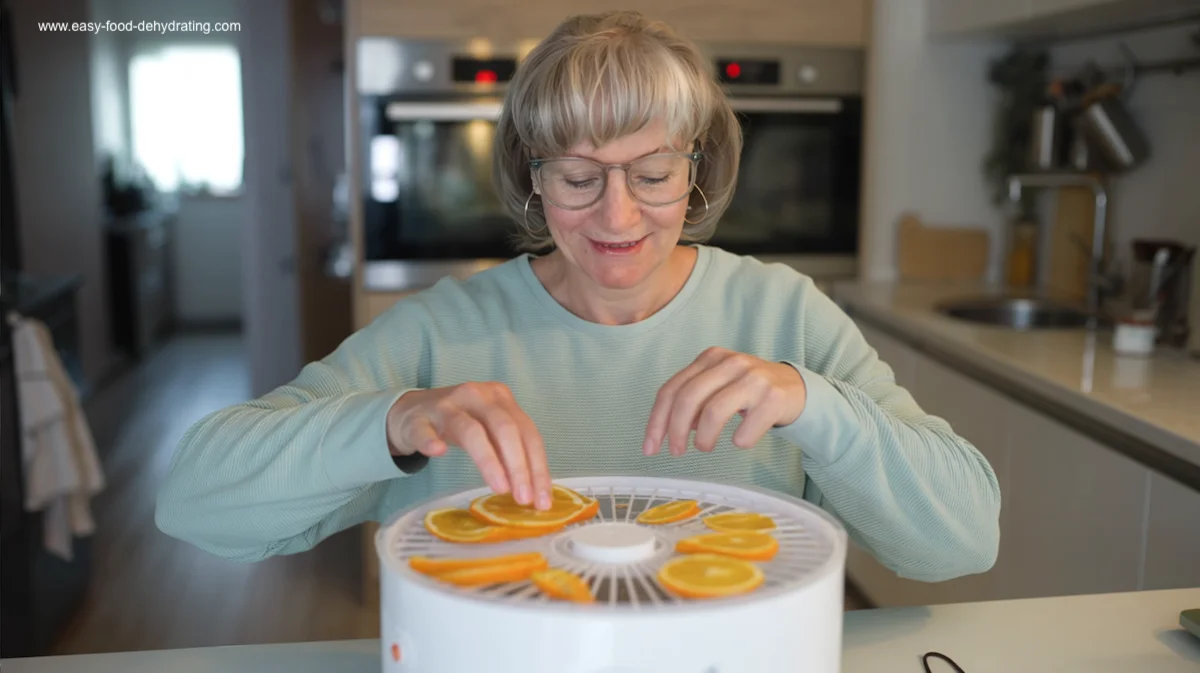
Dehydrated Citrus is Ideal for Recipe Flavoring
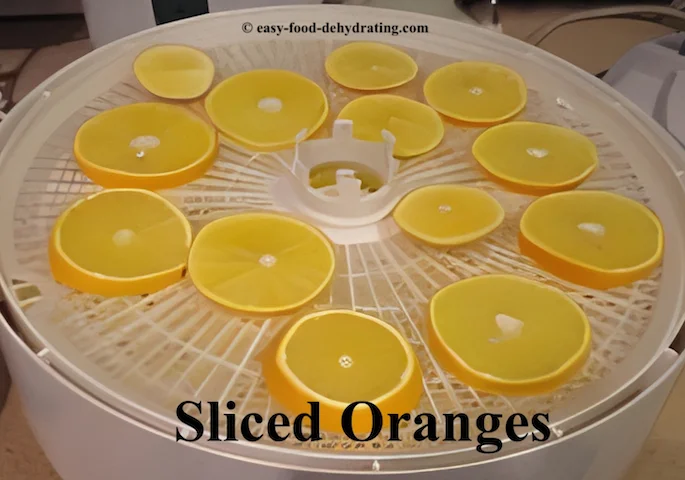
Grab your cutting board and a really sharp knife.
Begin by Using a Good Sharp Knife by Cutluxe!
Check out this great chef's knife with a full tang that means the handle and blade "are one" so they can't come apart when we're slicin' and a dicin'.
I know these Cutluxe Chef knives may be a little expensive, but they do last pretty much a lifetime when you maintain their cutting edges.
As an Amazon Associate, I earn from qualifying purchases — this does not affect the price you pay. Read full disclosure.
...or treat yourself to one of these like I did!
SUPMAKIN Slicer + Dicer Mandoline ~ OnceForAll Brand
French fry cutter, vegetable chopper, vegetable slicer cutter, potato slicer, chopper for kitchen meal prep.
See my review of this multi-function mandoline that I just couldn't resist getting!
Step-by-Step: The Foolproof Way to Dehydrate Citrus
- Wash the skins of your citrus fruits.
- Slice the citrus into 3/8" thick slices and arrange on your food dehydrator trays.
- Turn on your food dehydrator and set the temperature between 125°F and 135°F (or per your food dehydrator's instructions).
- Drying time: between 2-12 hours.
💡 Tip: Outside the U.S.? Most dehydrating temps here are listed in Fahrenheit - use our quick converter to see the Celsius equivalent for your machine.
- Citrus is brittle when dried fully.
- Please remember to rotate your dehydrator trays for even drying.
Dehydrating Citrus is So Easy!
Citrus is probably one of the easiest fruits to dehydrate.
Sadly, not one of the most edible slices of fruit to eat when dried, in my humble opinion!
BUT, read on to see how easy it is to dehydrate citrus for use in recipes and drinks!
Citrus Nutrition Info.
LEMONS + LIMES + ORANGES
Lemons
VITAMINS: High Vitamin C content along with vitamin A.
MINERALS: High in Potassium and Calcium and also
contain decent amounts of Magnesium and Phosphorus.
Limes are very often used in drinks and for the famous Key Lime Pie dessert!
VITAMINS: Limes contain good amounts of Vitamins A and C and contain Folate and Choline too.
MINERALS: Limes have Calcium, Iron, Magnesium and Phosphorus.
Oranges
VITAMINS:Loaded with Vitamin C, plentiful Vitamin A, and Folate.
MINERALS: Oranges score well in Calcium, Magnesium, Phosphorus, and Potassium.
All three citrus fruits contain Omega-3 and Omega-6 fatty acids.
Attention Grapefruit Lovers...
Read how to dehydrate GRAPEFRUIT here!
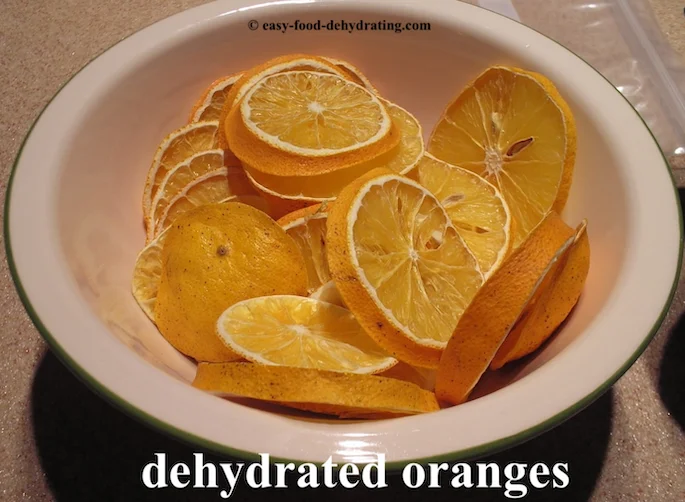
Why Crisp, Brittle Citrus Is the Secret to Success
The dried oranges shown in the bowl above are so lightweight! They make a really neat musical tinkling sound when tossed.
Creative Ways to Use Dehydrated Citrus in Recipes & Drinks
Don't forget that these dehydrated citrus rinds can be great ground up to be used for recipe flavorings and for baking!
If you remove the dehydrated rind and its white pith, the dried fruit centers make a tasty snack. The pith is the bitter-tasting part of citrus.
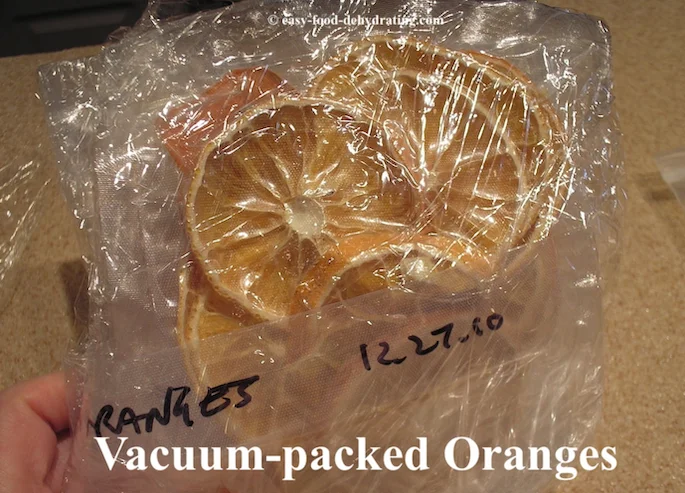
Vacuum-Sealing Citrus: The Key to Long-Lasting Freshness
This is what dehydrated oranges look like in the image above after they've been vacuum-sealed and wrapped in plastic wrap – ready to be stored away for long-term storage.
Check out the deals on Amazon below for plastic wrap. Target stores also have their own brand which I've used with good results.
Smart Citrus Storage: My Top Plastic Wrap Picks That Work
Lemons - Before and After Dehydrating :-)
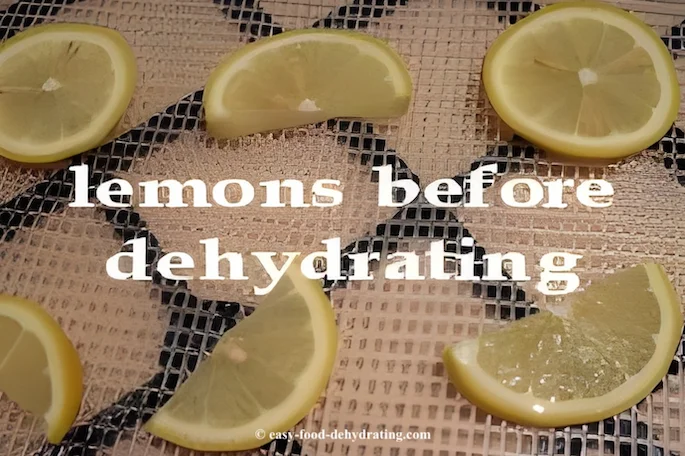
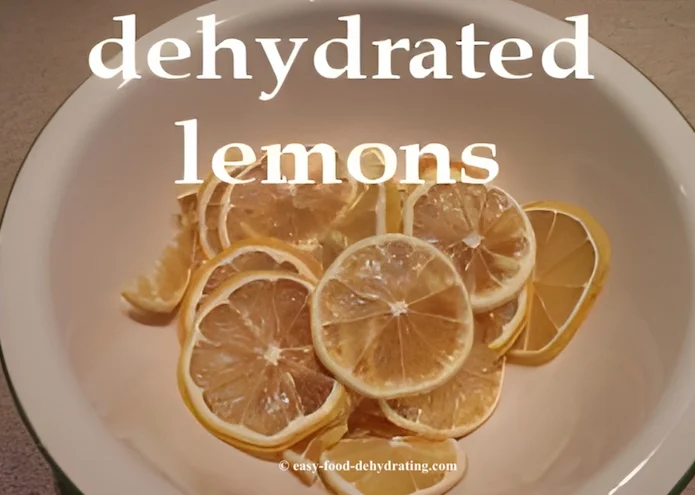
Ahh ~ The Scent of Orange Blossom: Love It, or Hate It?
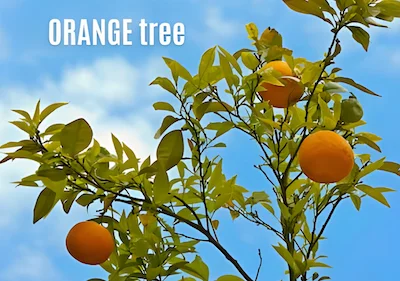
Living in central Florida, I'm lucky enough to have a few orange trees in our front yard.
But across the street are vast orange groves, and
boy oh boy, can you ever smell the orange blossom scent when they're in
full bloom!
To me, the orange blossom scent is one you either love or hate! I'll leave you guessing which side of the citrus fence I'm on! :-)
If you want to know more about growing citrus in Florida, please visit Gardening Solutions/University of Florida.
Citrus Dehydrating Questions Answered (So You Don’t Have to Guess)
Can you dehydrate whole citrus slices with the peel on?
Can you dehydrate whole citrus slices with the peel on?
Yes! Slice citrus with the peel intact for beautiful garnish slices. Just note that the white pith can add bitterness, so for recipes you may prefer peeling first.
Can I dehydrate citrus in an air fryer?
Can I dehydrate citrus in an air fryer?
Yes! Set your air fryer to its lowest temp (around 95°F–115°F or “warm” mode). Thinly sliced citrus dries in 2–5 hours. Flip slices halfway through for even results. They’re done when crisp and completely dry.
What are the best ways to use dehydrated citrus?
What are the best ways to use dehydrated citrus?
Use dried citrus for garnishing cocktails, flavoring teas, adding to soups and sauces, or grinding into flavorful zest for baking and cooking.
I love using dried orange in my carrot soup!
How do you know when dehydrated citrus is fully dried?
How do you know when dehydrated citrus is fully dried?
Fully dehydrated citrus will feel stiff and snap easily when bent. No squishy spots, no moisture pockets. The edges often curl up — a good sign it's done!
How long does dehydrated citrus last in storage?
How long does dehydrated citrus last in storage?
Stored in airtight jars or vacuum-sealed bags, dehydrated citrus lasts up to 12 months. Keep in a cool, dark pantry to preserve flavor.
What’s the best way to rehydrate citrus?
What’s the best way to rehydrate citrus?
Soak dried slices in warm water for 15–20 minutes. They soften enough for use in teas, marinades, and baked goods while still holding flavor.
Can I powder dehydrated citrus?
Can I powder dehydrated citrus?
Absolutely! Grind dried citrus slices into a fine powder for instant zest. Great for baking, seasoning blends, and DIY drink mixes.
Thanks for stopping by to learn how to dehydrate citrus! With just a little slicing and drying, you’ll have jars of bright lemon, lime, and orange slices ready for teas, soups, baked goods, and even jerky marinades.
Before you go, don’t forget to grab your free 5 Dried Food Recipes You’ll Actually Love PDF — featuring carrot soup, minestrone soup, split pea soup, spicy beef jerky, and banana cinnamon rolls. They’re a delicious way to put your dehydrated ingredients to work!
Get 5 Dried Food Recipes You'll Actually Love
Here's where you can get your copy of our all new
5 Dried Food Recipes (That Actually Taste Great)
They're my all-time favorite easy dried food meals!
Get it here right now.
For Free!
Before You Go...
If you enjoyed this page, tap the ❤️ in the lower right-hand corner.
It saves this page to your Grow bookmarks so you can find it again later.
You’ll also see quick share buttons to copy the link, post to Facebook,
or save it straight to Pinterest.




